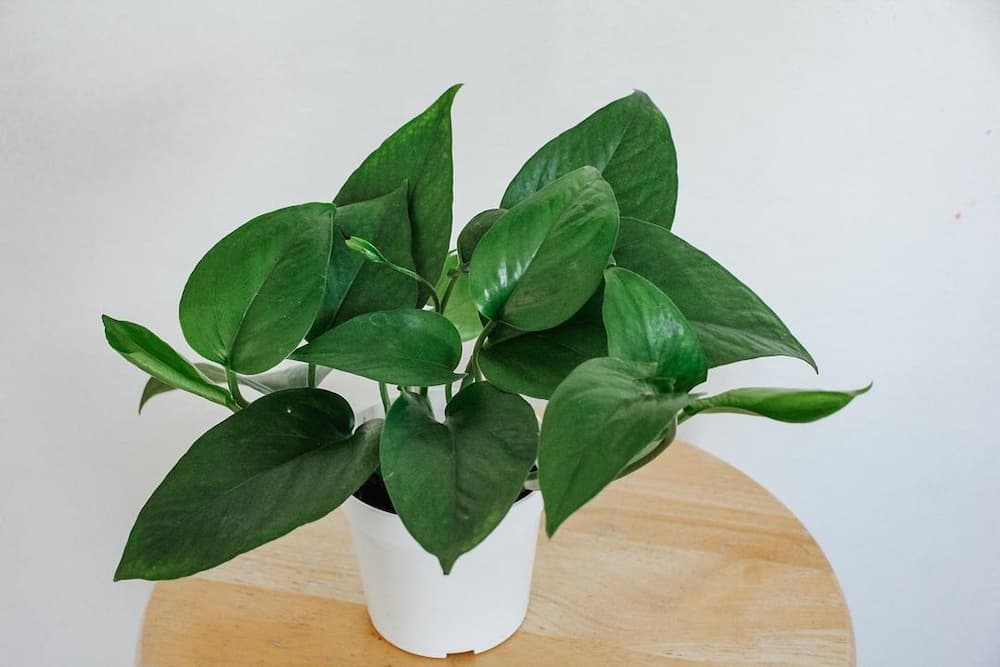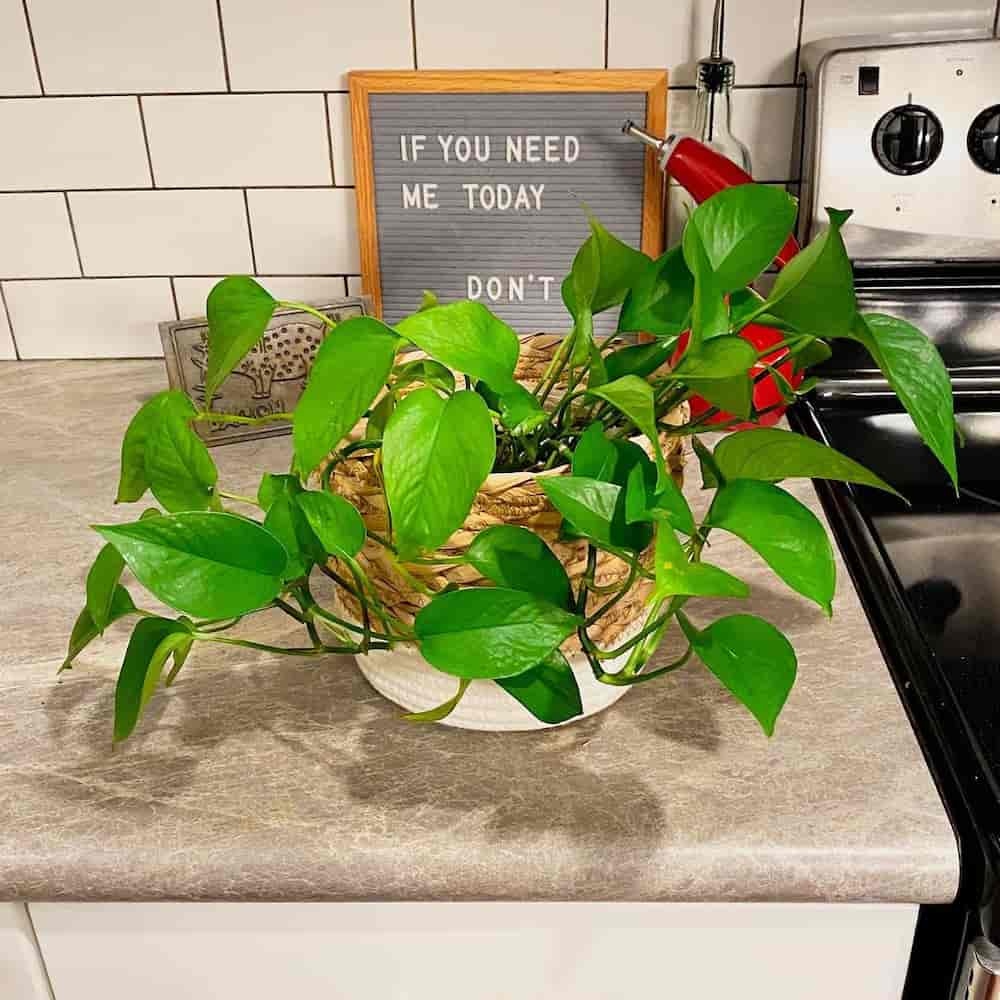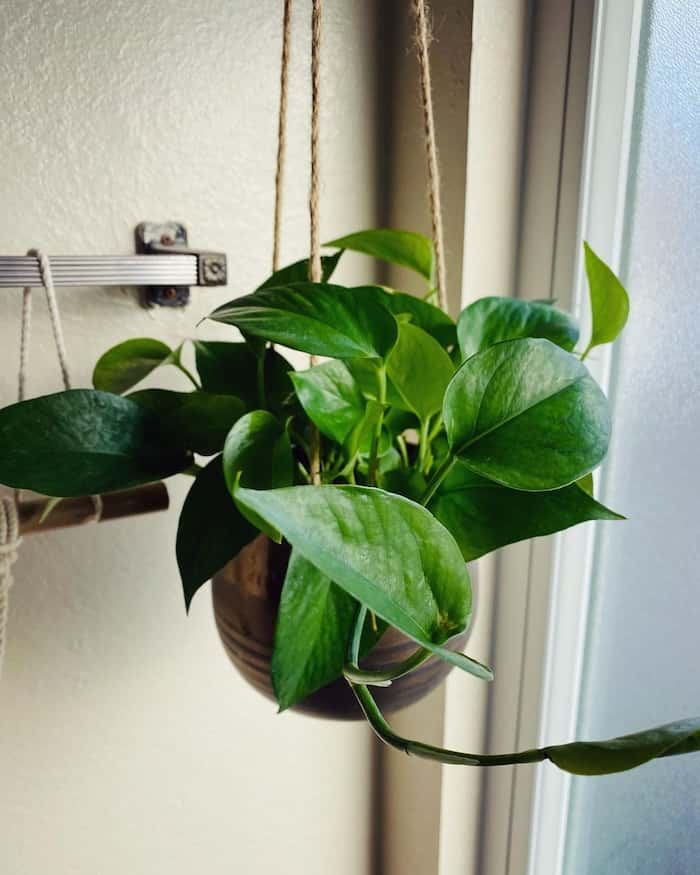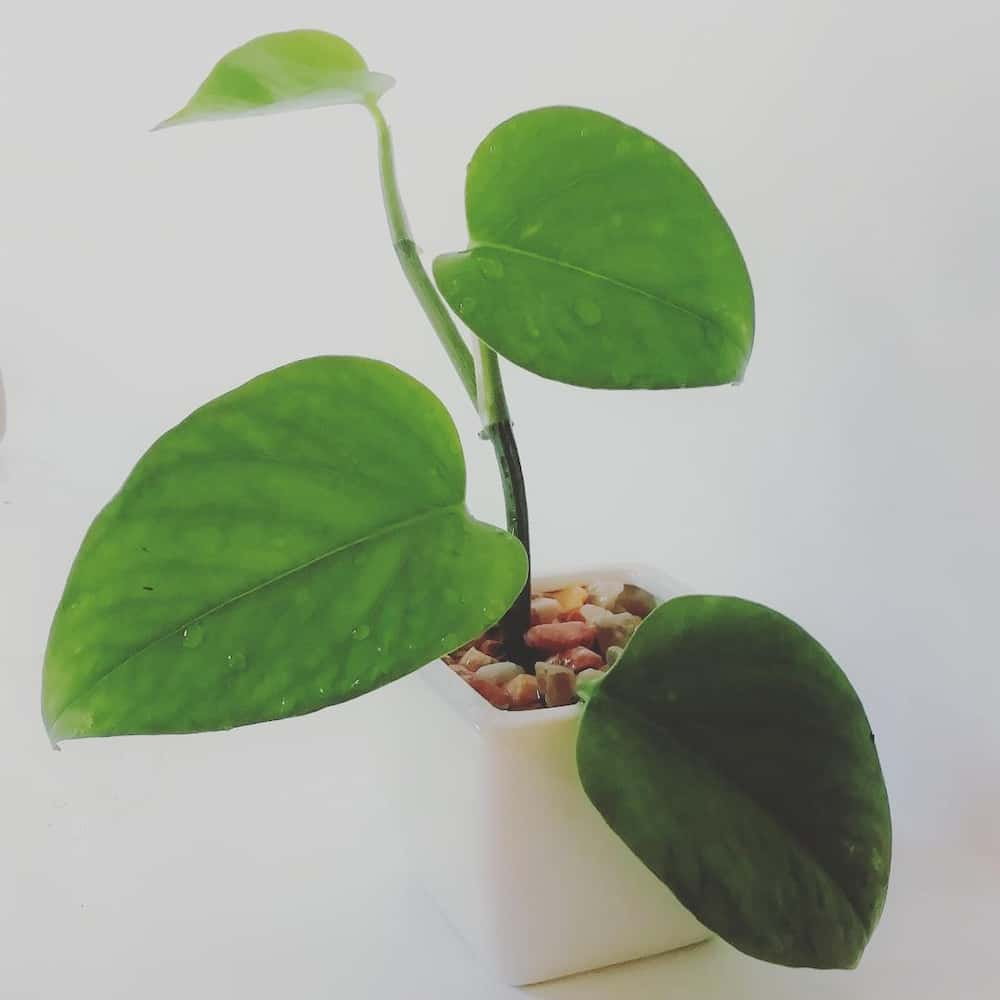Pothos come in a wide array of cultivars, each with its own aspects and characteristics. The green queen pothos, for example, is one such variety that has the same iconic heart-shaped leaves that pothos are well-known for.
Like other types of pothos, the green queen has the same growing requirements, which means it is an easy to care for tropical plant.

Table of Contents
How to identify green queen pothos
The easiest way to identify the green queen pothos from other varieties is that it has solid emerald green foliage. Along with its solid green foliage, the green queen pothos also has smaller and narrower leaves than other pothos varieties.
This can help you determine whether the pothos you are growing is a green queen or something else. That said, even with these ways to sort out which one is which, there are several other pothos cultivars that continue to look similar to the green queen, which makes it extremely difficult to figure out which one is which.

As an added point, most pothos varieties have the same or extremely similar care requirements.
While that doesn’t help you in determining whether or not you have a green queen pothos on your hands, it does at least mean that if you misidentify one, you’re probably still going to care for it properly if you simply consider that green queen pothos care is the same as any pothos care.
Green queen pothos vs jade pothos
Green queen pothos and jade pothos are actually different names for the same plant. The jade pothos is an all-green variety of the marble queen, hence the name “green queen”. While this can be confusing, knowing that they are the same pothos variety will help you better understand this plant.
The marble queen is itself one of the many variegated pothos types available, meaning that it has more splashes of white than you’ll find on the green queen pothos.
Green queen pothos vs golden pothos
While both the green queen and golden pothos share the same growing and care requirements, they do look completely different when it comes to their leaf coloring and patterns. Green queen pothos have solid green leaves, while the golden pothos have green leaves splashed with colors of yellow and gold.
This means that this is one comparison where it’s relatively easy to clarify the difference between the two types of pothos.
How do you take care of a green queen pothos?
Like other pothos, the green queen isn’t a difficult plant to care for. It’s this easy-going nature that makes them a favorite for both beginner and more experienced gardeners. That doesn’t mean, however, that they don’t require a certain level of care to make them healthy.
1. Keep it in the ideal temperature range
The ideal temperature for green queen pothos is between 65 and 85 degrees Fahrenheit. This plant can, however, handle temperatures a little colder or a little warmer. You shouldn’t expose the plant to temperatures lower than 55 degrees for an extended period of time since this can cause the plant to go into shock.
It is also important to keep the plant away from areas in your home where the temperature can fluctuate quickly. Areas such as underneath or next to a heating and cooling vent or near an exterior door should be avoided.

2. Maintain appropriate humidity levels
Pothos do love their humidity and do their best when the humidity level is 60 percent or above. With that said, however, green queen pothos will thrive even if the humidity level is only at 40 percent.
To increase the humidity level around the plant, use a humidifier or set the plant on a drip tray. Drip trays are shallow trays filled with pebbles that collect the excess water that drains out of the pot. This water will naturally evaporate into the air and increase the humidity level in that general area.
3. Water regularly
Green queen pothos like their soil to be moist but not soggy. This can be a difficult balance to achieve since overwatering the pothos can quickly lead to disaster. The best thing to do is allow the green queen pothos’ soil to dry out just a little between waterings.
To check how dry the soil is, simply insert your finger about 2 inches into the pothos’ soil. If it feels moist, wait 2 to 3 days before repeating the process. Don’t water the green queen pothos until that top few inches of soil starts to feel dry.

4. Bright, indirect light
The green queen pothos need light that is bright but indirect. An area near an east-facing window works well, as long as the light that comes through the window is diffused. A sheer curtain is a quick and simple way to protect the pothos from harsh, direct sunlight that is shining through the window.
Another option is to use artificial lighting for the pothos. If you go this route, just make sure that the artificial lighting is not directly shining on the plant. Pothos can handle some low light situations, but putting the sun in direct sunlight will quickly burn its foliage.
5. Put the green queen pothos in well-draining soil
As with other types of pothos, the green queen needs soil that drains well and isn’t compact. In most cases, traditional potting soil will work fine, but you should consider mixing in equal parts perlite and peat moss to help improve the soil’s drainage ability.

6. Feed it occasionally
Pothos don’t require much feeding, but you should still apply an all-purpose liquid fertilizer to the plant during its active growing season. When you apply the fertilizer to your pothos, do so once a month at half its strength. Refrain from overfertilizing the plant since this can have a negative impact on the plant’s health.
7. Prune it as needed
Green queen pothos are fast growers, which means this plant can quickly get out of control. This is where pruning your pothos comes in handy. Pruning will not only help control the size of the plant, but it can stop it from becoming leggy while also encouraging growth.
The best time to prune the pothos is during its active growing season, since the plant is more likely to quickly bounce back from the stress that pruning naturally causes. Before even picking up the shears, create a plan on where you want to cut and prune.
When ready, cut the plant just above a leaf node. This is where the new growth will emerge from. You can also reuse the cut portions of the green queen pothos by propagating them in soil or water.
8. Repot the green queen from time to time
Repotting the green queen pothos will typically be required once every few years when the plant outgrows its pot. You know it’s time to repot the pothos plant when the roots start to grow out the drainage holes.
When you do repot the green queen pothos, use a pot that is two to three sizes bigger than the current container. This will give the plant enough room for the roots to grow and stretch without it becoming root bound.

Is green queen pothos rare?
Green queen pothos are not rare, and are actually one of the more commonly found pothos plants. With that said, however, you may have to look for this plant under its more common name, jade pothos. If you go searching for a green queen, your results may be limited.
As mentioned earlier, the green queen pothos and jade pothos are both exactly the same plants, just different names. As such, it’s best to search with both names as some plant suppliers will prefer to use one name over the other.
Where to buy green queen pothos
Green queens are available at various merchants, both online and at brick and mortar stores. Garden centers, nurseries, and even some home improvement stores may have them available for purchase. If you’re unable to locate a green queen near you, try connecting with local gardening groups as they may be able to point you in the right direction.
In particular, getting a cutting from a local group can be a great way to start your green queen pothos care journey!
